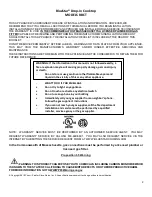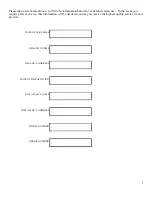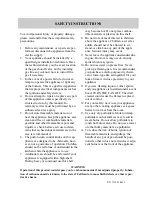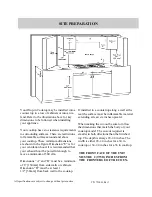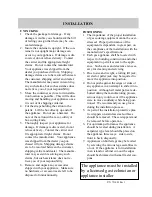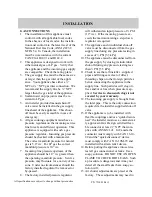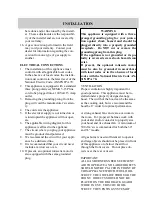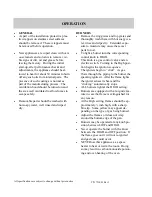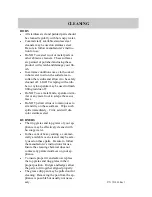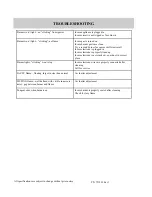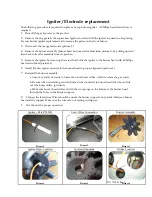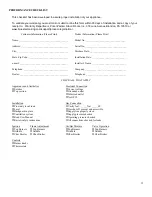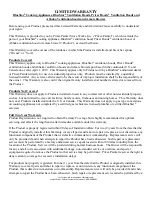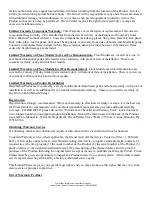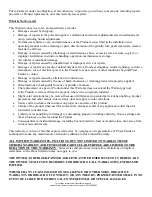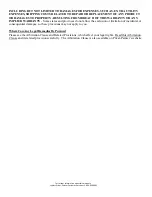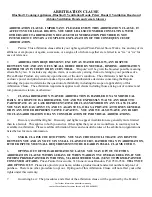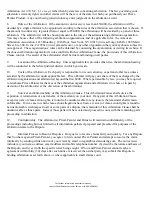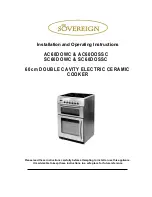
P/N 751001 Rev 1
UNPACKING
1. Check the package for damage. If any
damage is visible you should mark the bill
of lading you sign that there may be con-
cealed damage.
2. Insure the container is upright. If the con-
tainer is not upright major damage can
occur to your appliance. If damage is dis-
covered, do not refuse delivery. Contact
the carrier and file appropriate freight
claims. Do not contact the manufacturer.
Your appliance was shipped from the
dealer you purchased it from. Shipping
damage claims are to be resolved between
the customer, shipping carrier and dealer.
The manufacturer may assist in resolving
any such claims, but such assistance does
not relieve you of your responsibility.
3. Move the container as close to its installa-
tion location as possible. This will reduce
moving and handling your appliance once
it is out of its shipping container.
4. Cut the straps holding the carton to the
palette. Lift the box directly up and off
the appliance. Do not use a hammer. Do
not cut the carton with a razor, utility or
box cutting knife.
5. Thoroughly inspect your appliance for
damage. If damage is discovered, do not
refuse delivery. Contact the carrier and
file appropriate freight claims. Do not
contact the manufacturer. Your appliance
was shipped from the dealer you pur-
chased it from. Shipping damage claims
are to be resolved between the customer,
shipping carrier and dealer. The manufac-
turer may assist in resolving any such
claims, but such assistance does not re-
lieve you of your responsibility.
6. Remove and unpack any accessories
shipped with your appliance. Make sure
no hardware or accessories are left to be
disposed of unintentionally.
POSITIONING
1. The importance of the proper installation
of gas cooking equipment cannot be over-
stressed. Proper performance of the
equipment is dependent, in great part, on
the compliance of the installation with the
manufacturer’s specifications.
2. Each gas appliance shall be located with
respect to building construction and other
equipment to permit access to the appli-
ance. Such access and clearance is neces-
sary for cleaning and servicing.
3. Due to size and weight, a rolling lift jack,
air sled or pallet jack may be required to
move the appliance into position.
4. Do not push against the edges or sides of
any appliance in an attempt to slide it into
position. Although all metal parts are de-
burred during the manufacturing process,
serious injury could occur if the appliance
were to move suddenly while being posi-
tioned. We recommend you use gloves
during the installation process.
5. As part of the installation protective plas-
tic wrappers on stainless steel surfaces
should be removed. These wrappers must
be removed before operation.
6. For optimum performance the appliance
should be leveled during installation. A
carpenter type level should be placed on
the appliance three ways: side to side,
front to back, diagonally.
7. Appliances on bullet legs may be leveled
by screwing the various leg assemblies in
or out. If the appliance is for installation
in an island or cabinet cut-out the edges
should be shimmed with small metal cou-
pons.
INSTALLATION
The appliance must be installed
by a licensed gas technician or
appliance installer


